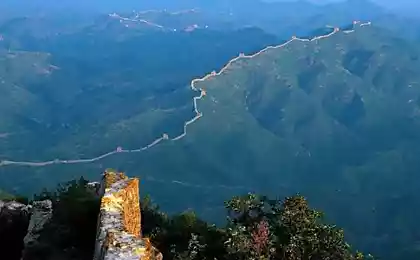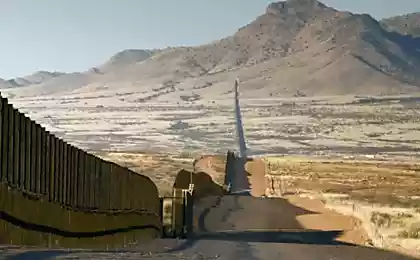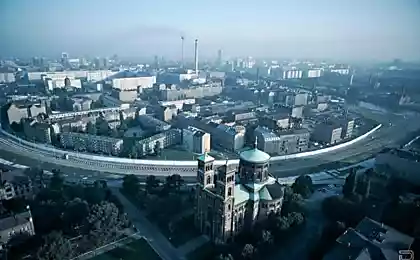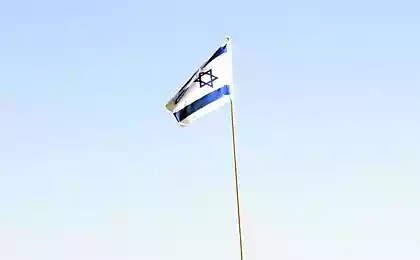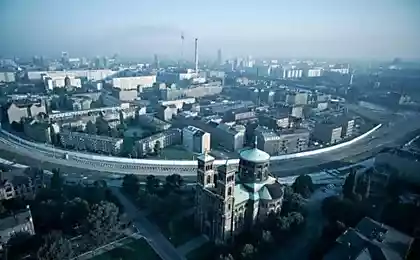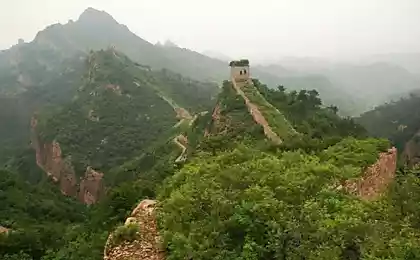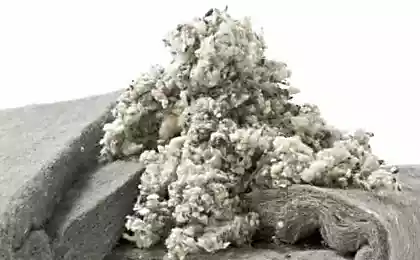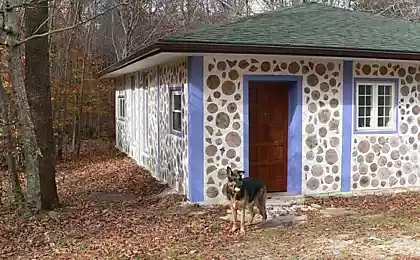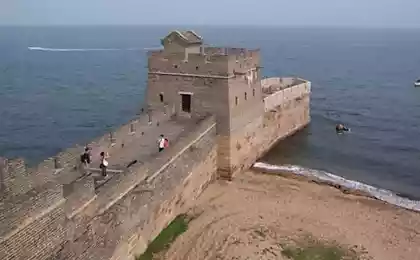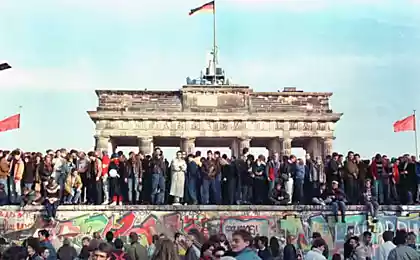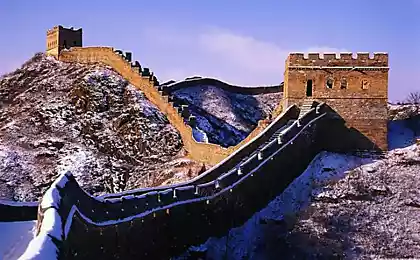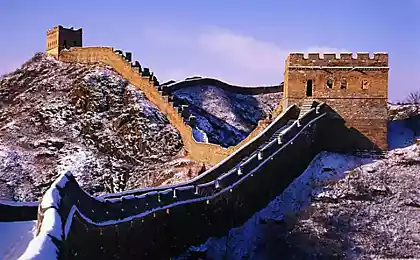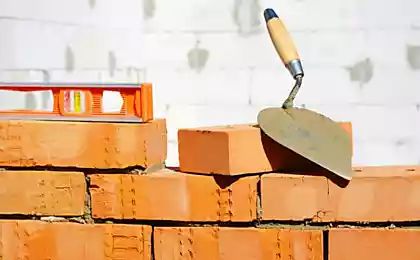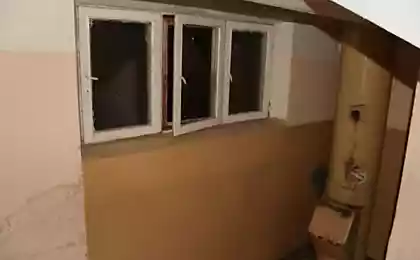2731
Gloomy Wall
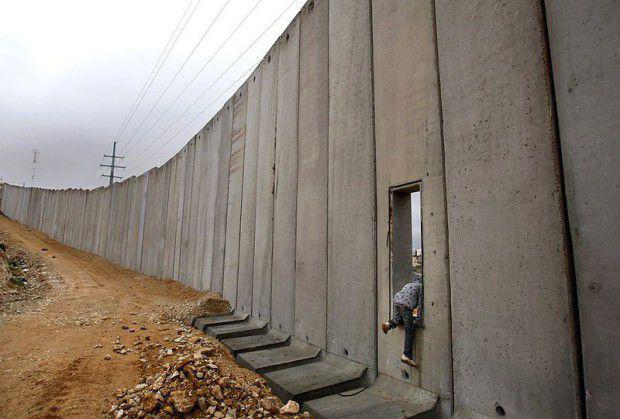
The separation barrier and the green line in Cyprus
In July 1974, the Turkish military has used the failed Greek Cypriot coup as a pretext for the deployment of a peacekeeping operation, capturing approximately 8% of the territory of Cyprus. After that Turkish troops advanced to the ceasefire line established in 1964, and captured another 37% of the island, making the green line in the separation barrier in 1984.
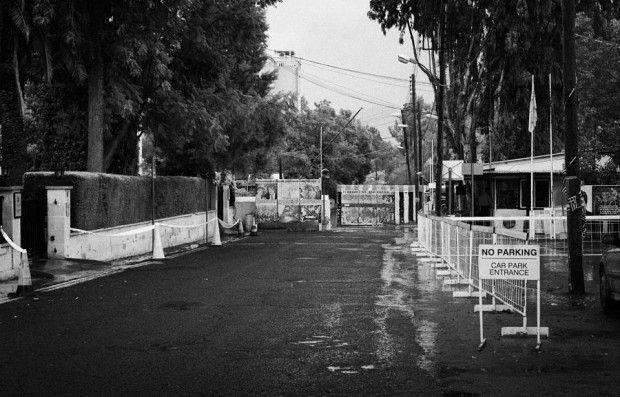
Cyprus barrier cut in two, separating the Greek Republic of Cyprus by the Turks proclaimed Turkish Republic of Northern Cyprus, which is not recognized and condemned by all UN member states, except Turkey. Since before the coup in Cyprus was not ethnic division, it has led to a massive displacement of the population. 200,000 Greek Cypriots were expelled from the northern (Turkish) part of the island, and from the south were expelled 60,000 Turkish Cypriots.
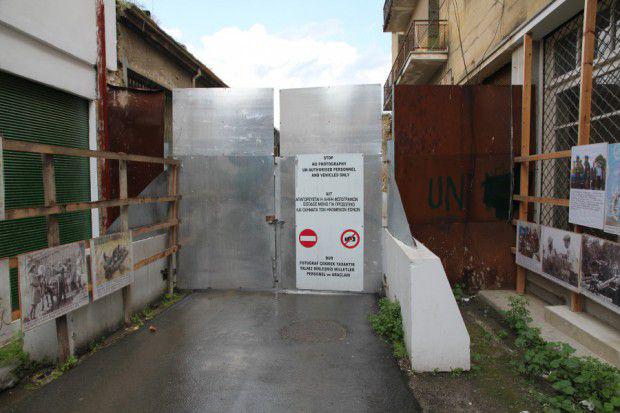
The barrier includes a buffer zone, enclosed by barbed wire, watchtowers, anti-tank ditches, minefields and concrete wall segments.
The situation is heating up on both sides. As said, «New York Times» shop owner in 1989, the year:
However, the situation is somewhat improved. After 30 years, the policy did not cross the border, now in it there are several passages, the first of which was established in the year 2003, when the president of the TRNC has punched a hole in the wall on the Holy Wednesday. Hundreds of people lined up in the hallway Ledra Palace to see their families for the first time in many years.
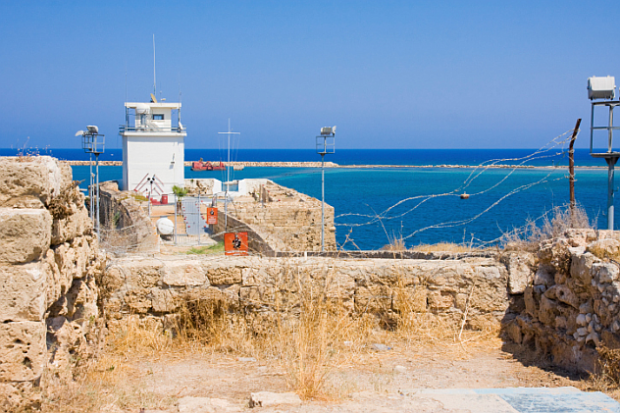
The border of Egypt and Gaza
In 2009, Egypt began the construction of a barrier along its border with Gaza to stop the flow of contraband, weapons, explosives and insurgents.
After completion of the length of the wall will be 9-11 km. In contrast to the existing external walls, new will be made of steel and leave the ground at 18 meters. Its segments are equipped with sensors and hoses, if necessary, to flood the tunnels with sea water. The original design was a 9, 6 km, and Palestinian sources reported that the tunnels almost 30 meters deep collapsed almost daily.
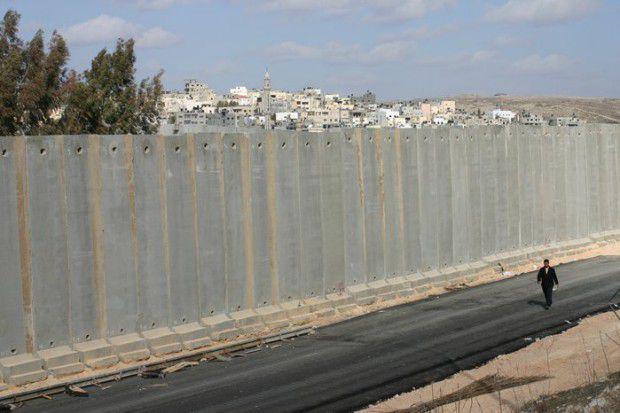
Hamas calls this barrier "wall of death" because it is afraid that it will be used to strengthen the embargo and urges Egypt to put an end to this. For a terrorist group, receiving weapons and building materials for the construction of the new tunnel, which has to be paid by operators to $ 2,500 per year for the use of tunnels, this is not surprising.
It was not long before the barrier was partially destroyed, and construction halted. It restarts several times. The international community also prevents the construction of the wall, since in 2010 he was assassinated Egyptian guard, flashed both peaceful and violent protests. In Jordan, in the same year was issued a fatwa (religious decree Muslims) against the wall.
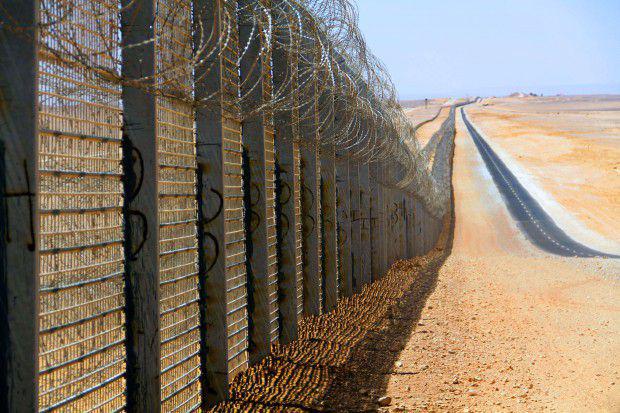
Critics argue that the tunnels are a lifeline for Gaza, because it goes on not only the smuggling of weapons, but also food and medicine. In the past, Egypt turned a blind eye to these tunnels, but a series of terrorist attacks forced him to take action.
Smuggling tunnels used by Hamas and other terrorist and extremist groups and well-armed wealthy criminal class that emerged in the Gaza Strip and the Sinai Peninsula. Sinai town of El Arish was the epicenter of these problems, and now Egypt is building another wall to completely surround it and leave only ten points of entry and exit.

Barricade Kuwait-Iraq
After Iraq's invasion of Kuwait in 1990 and the first Gulf War the US-led United Nations established a demilitarized zone between peoples. In 1993, Kuwait has started the construction of 193 km of border fencing, barricades, Kuwait, Iraq, under the control of the UN Observer Mission.
The first version was a system of barriers and trenches with over a million land mines. Many of these mines have been reworked and are filled by Iraqi forces during the invasion in 1990. In 2004, Kuwait announced the construction of additional iron barrier along the border.
In 2005, the Iraqis said that the barrier destroy property, and construction was halted.
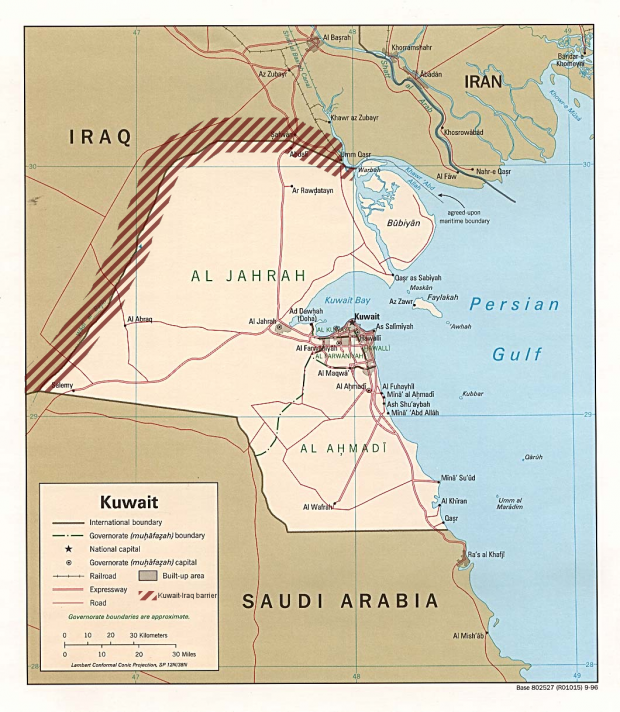
In the same year caused considerable controversy creation Kuwait on behalf of the United States passes the marked US Marines places barriers that were large enough to pass through them could tanks. The UN has accused the US of violating the UN mandate against the military operations in the demilitarized zone, while the US without worrying about reprisals, said: "This is not a problem, because any war with Iraq justified its previous invasion of Kuwait and possible acts of aggression in the future ". Of course, the United States invaded Iraq just a few days later.
Iraq and Kuwait were set against each other for a long time, while maintaining the visibility of cooperation, since the beginning of the struggle for the independence of Kuwait in 1963. Despite the achievement of independence, the regime of Saddam Hussein considered Kuwait part of Iraq and considered the establishment of the region of the barrier illegal. In Iraq, there are still many people who think the same way, and when you consider all the troubles facing the region, it is very unlikely that the barrier is destroyed.

Border barriers Malaysia-Thailand
The border of Malaysia and Thailand extends for 505 km from the Malacca Strait to the Gulf of Thailand. This fenced area between the then Malay states under British protectorate and the Thai kingdom was established under the Treaty on the border 1909. Today Thailand border control and modern Malaysia.
In 1965, the country organized a joint regional border committee that oversees security along the border. It was created, in particular, in response to the communist insurgency.
In 1991, Malaysia announced that it will build a concrete wall length of 96 km, in order to separate the Malaysian state of Kelantan from Thailand. Although the purpose of the construction was officially curb criminal activity along the border, observers noted that the relations between the two countries have been strained due to disputes over territory, fishing rights, and because of the Islamic separatist movements. Malaysia always denies political instability in relations with Thailand and avoids mention of violence.
Nevertheless, in 2007, Prime Minister Surayud Chulanont of Thailand supported the plans to build one more barrier along part of the border, and in 2013, Malaysia announced that it has, with the approval of Thailand builds another wall along the river Sungai Golok, which Kelantan separates from Narathiwat Province. Along the river are many Malaysians living and worth a lot of illegal moorings. The current Interior Minister Dr. Ahmad Zahid Malaysia Hamidi said that these people will be resettled, and piers destroyed.
Only this year amid calls US to address the problem of human trafficking (both countries received the lowest ratings on this issue) and violence tearing the region apart - including a series of explosions 2012-2013 th years - it was decided to replace the original Structures must for modern fencing with improved system security.
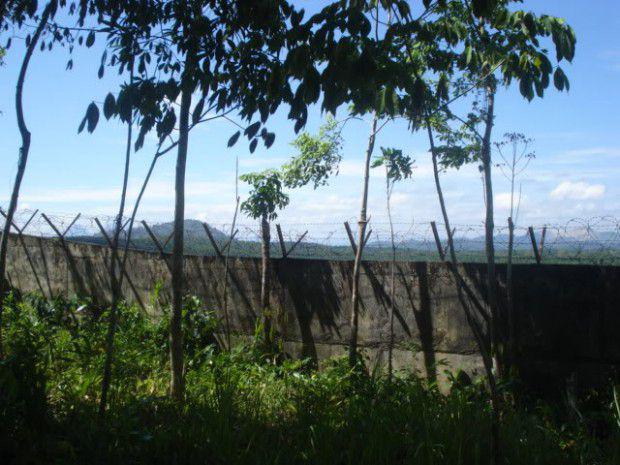
Barrier between Saudi Arabia and Yemen
Since 1990, when Yemen reached association, and 2000 tensions between Saudi Arabia and Yemen was high, and some times even flashed fights. In 2000 they established a fragile peace. However, in 2004, Saudi Arabia, one of the most vocal critics of Israel's construction of the barrier began to build its own barrier from Yemen.
It is made of concrete-filled barriers, stuffed with sensitive electronic equipment, becoming part of a larger $ 9 million project to install CCTV. Saudi Arabia is trying to stop the smuggling of weapons, explosives (including khat, a popular plant in the Middle East) and the people of Yemen, but it was a hard struggle.
Construction began after the Saudi border town killed 36 border guards and after a series of terrorist attacks, organized by radical Islamists in the year 2003, which killed 50 people and injured hundreds.
Work on the barrier stopped in the year 2004, and officials from both sides went into negotiations to determine their own destiny. Yemen likened Israeli barrier and said that it violates the contract, indicating that no armed forces can not be located closer than 20 km buffer zone along the barrier, and that it would violate the right shepherds grazing sheep.

In 2008, construction was resumed, and in 2013 the 74-kilometer stretch of fence was completed to solve a new problem - the waves of illegal immigrants, mostly Somali, Ethiopian and Yemeni refugees crossing the border illegally in search of work. Construction began again to stop the flow of migrants and weapons smuggling. After the overthrow of the former president of Yemen, Ali Abdullah Saleh, when militant Islamists, causing instability in the region, took control of part of Yemen's problems with radical groups and smuggling became worse than ever.
Officials in Saudi Arabia reported that the new barrier set by French contractors brought great success in the fight against smugglers and saboteurs. After completion of the length of the barrier will be 1799 km.
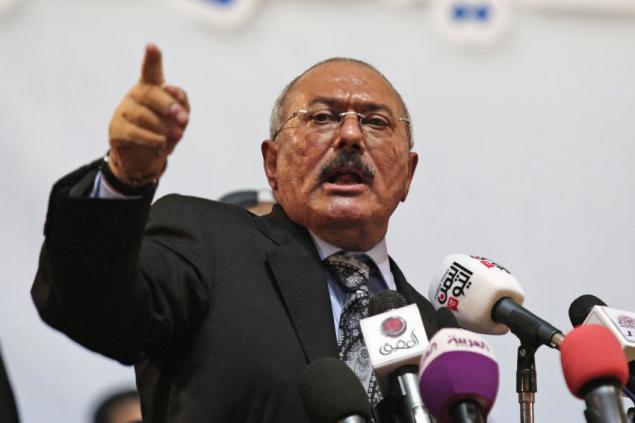
India-Pakistan and Iran-Pakistan border
In 2004, India completed its 547-mile barrier, equipped with barbed wire, thermal imagers, night vision devices and sensors on the de facto border with Pakistan in Kashmir. His goal - to prevent infiltration of separatist militants carrying out terrorist attacks on civilians and military targets.
For India, it is not new. After a failed but bloody separatist rebellion in the Punjab in 1980, India has built a wall along the provinces of Punjab and Rajasthan. Now all the fenced boundary, and through it there is only one pass, and its backlight can be seen from space.
In 2014 the situation is showing promise as a growing trade ties, which can lead to cooperation between nations, when the two sides agreed to open a corridor to Wagah to allow free passage of trucks and containers for trade. Hopes were dashed when less than a week, Indian police seized 100 kilograms of prohibited items hidden in the truck, which went from Pakistan. In response, Pakistan has stopped cross-border movement across the border.
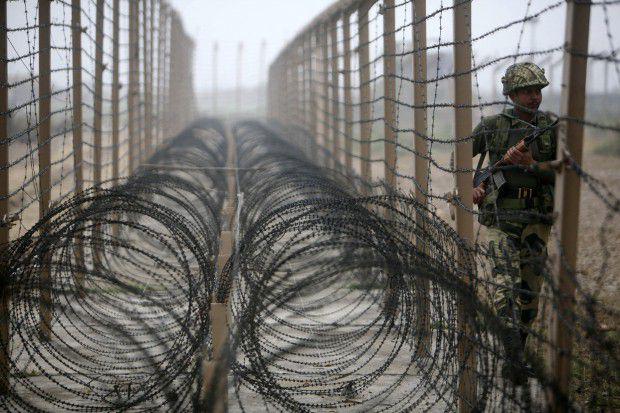
India is not alone in building walls against Pakistan, one of the most fortified barriers in the world is between Pakistan and Iran. This three-meter wall is almost a meter thick, which extends for 700 km in the scorching desert. It also has a number of ditches, trenches and other fortifications, its goal - to stop illegal border crossing and the flow of illicit drugs into Iran.
Analysts say that the real reason for building - in suppressing insurrection Baluch Sunni Muslims, has been brewing for years, and protection against militant group called "Jundullah" ("Soldiers of Allah"), began fighting for Sunni Muslims against the Iranian Shiite regime. Because the wall is between the Baloch communities, critics call this the separation barrier, causes damage to civilians and destroying the local economy, "a blatant attempt to divide the nation Baloch" on the two sides of the barrier.
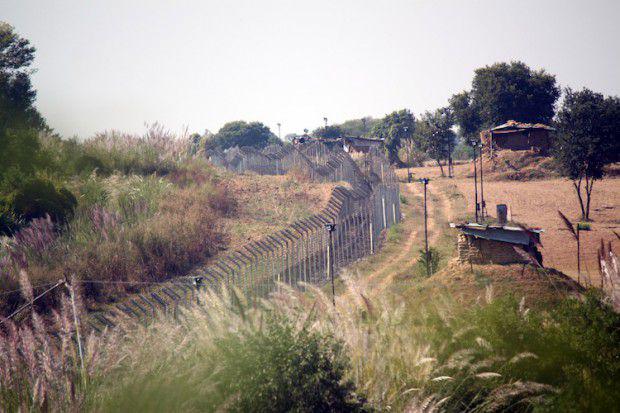
Great Wall Morocco
From above it looks like a scratch in the sand, crosses the entire Sahara. Moroccan wall consists of 2575 kilometers away sand embankments, walls, fences, minefields and bunkers, it is almost half the size of the Great Wall of China, and four times as many Israeli barrier. Construction of "Berm" was launched in 1980 the Moroccan royal army as the barrier between the southern Moroccan provinces and territories controlled by the Polisario Front (Saharan national liberation movement) to prevent the return of Saharan refugees to their homeland. Between 1980 and 1987, the years had added five more walls.
After the armistice of 1991 patrol both sides of the wall. Moroccan forces numbered 160,000 soldiers and military facilities installed every 11 km along the barrier, and the Polisario refuses to divulge its numbers.
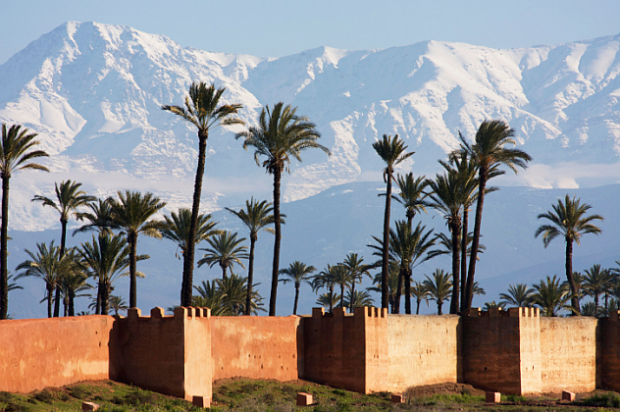
Critics have called the barrier "wall of shame" because it cuts the Sahrawi refugees and soldiers from their families in Algeria and damages Saharan nomads in the region. Although this barrier and have not received such publicity, as an Israeli, he became the center of the protests on behalf of refugees Sahrawi camps. These movements have attracted public attention when in 2008, the 19-year-old Ibrahim Hussein Leybeyt lost his right leg below the knee, accidentally stepped on a mine.
The conflict in Western Sahara - one of the longest in the world of contemporary conflict, which began in 1976, when the Spanish colonizers illegally shared area between Morocco and Mauritania.
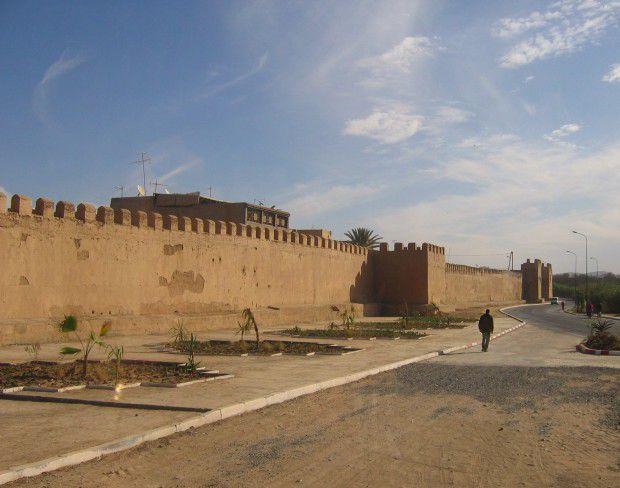
The boundary of the United States and Mexico
The boundary of the United States and Mexico - a system gradually built barriers and new sections erected after the law of a safe screener of 2006. Barriers to pedestrian and vehicle barriers, controlled roads and lighting complete system cameras, radars and sensors are used to prevent illegal immigration from Mexico to the United States and prevent smuggling and the flow of drugs.
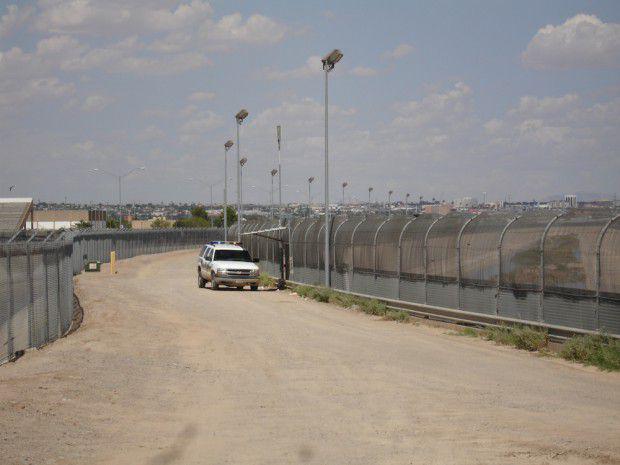
From the start of construction in the United States heated debate. In some places in the barrier remained gaps, and many blamed the government that the rich and the politicians are protected from destruction by a barrier of their property, while ordinary people have been damaged. Costs fell on the shoulders of taxpayers, moreover, shared fences Indian tribes living along the border.
Others complained that the walls are not enough to stop migration, and it only causes more deaths, because people go to extremes to her cross. Level Death took off almost instantly when immigrants tried to overcome the wall on the border with Arizona during the sometimes deadly summer months.
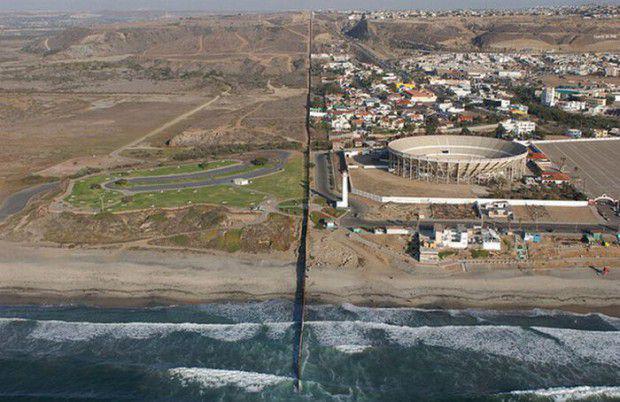
The barrier also caused serious environmental consequences, since the Department of Homeland Security is building bypasses many of the old laws on nature protection.
Nevertheless, the barrier proved its usefulness in the detention of illegal immigrants. For example, in 2007, the year trying to cross the border only 150 000 people, compared with 600,000 in the early 1990s.
Border guards also found and destroyed more than 170 smuggling tunnels from 1990.
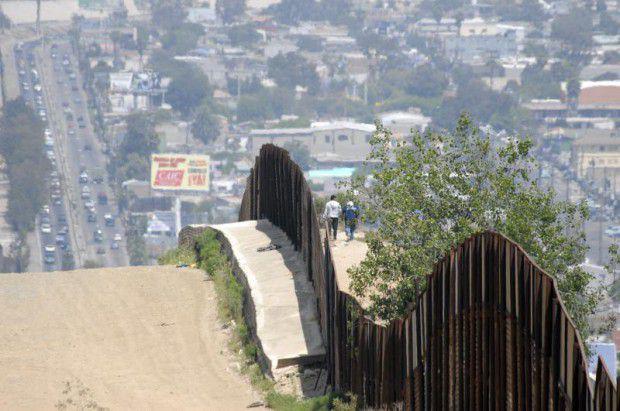
Uzbekistan-Afghanistan Border
Uzbekistan from Afghanistan separates the barrier of barbed wire with a second, higher level of electrified barbed wire, patrolled by armed guards and protected by mines. This is one of the most well-protected borders in the world, and you can cross it in only one bridge. It attracted the attention of the media in the year 2001, during the crisis of humanitarian aid, caused the US war in Afghanistan.
Initially, the border was closed, when to power in Afghanistan, the Taliban came. A few days after the Sept. 11 attacks, when the US announced a military operation against the Taliban, Uzbekistan has replaced all the old fence on the border with Afghanistan from Turkmenistan to Tajikistan. The New Frontier was twice as old, and it conducted electricity to prevent illegal immigration and stop trying to get refugees to Uzbekistan
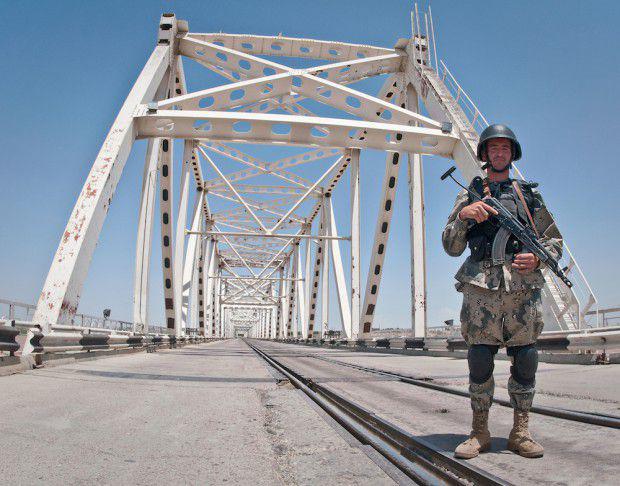
Lonely Bridge on the border of the Soviet Union was built to ferry arms and ammunition to the Afghan territory. During humanitarian crisis in the early 2000s, December 9, 2001 the first year for the first time since 1997, the 135-meter Friendship Bridge was opened on the background of the squall political maneuvers that ultimately allowed humanitarian aid to enter in war-ravaged Afghanistan just before as could come a famine.
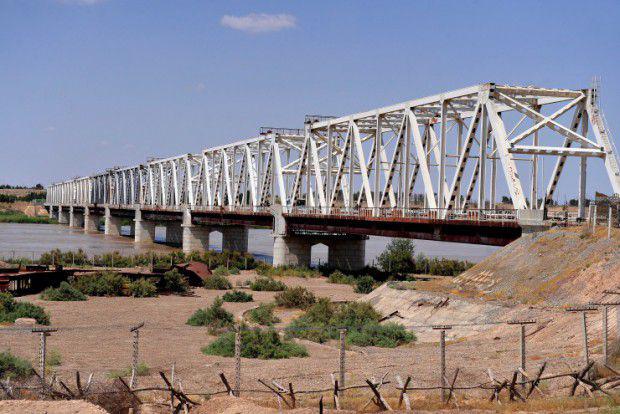
Israel: The barrier in the West Bank
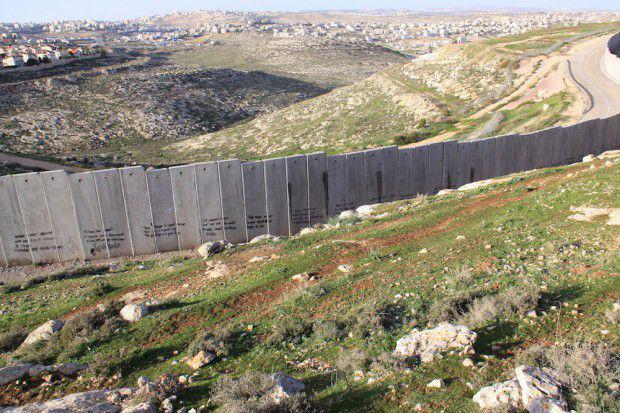
Barrier on the West Bank currently extends to 670 km and consists of a 5-meter-high concrete base and wire mesh, barbed wire and trenches, it is equipped with electronic sensors and other equipment. In some places, the barrier grows up to eight meters in height and is complemented by watchtowers. Construction began in 2002, the year in order to protect Jerusalem from attacks by Palestinian suicide bombers. How barrier was effective?


